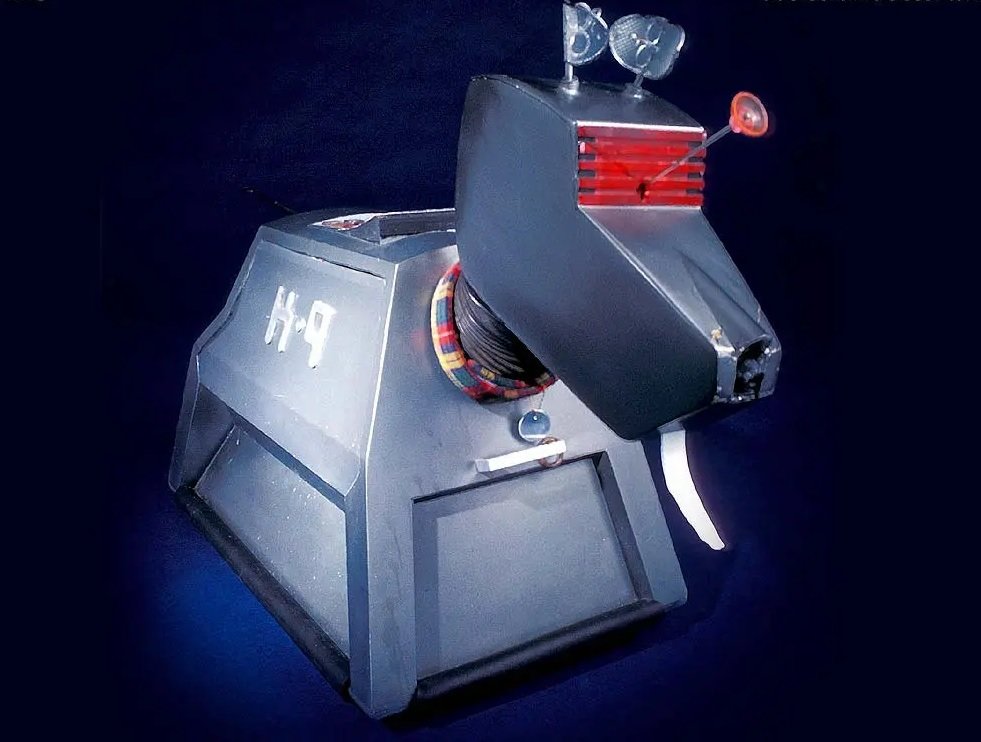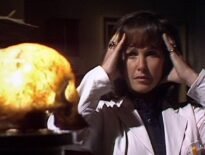From an interview conducted by Simon and Frank Danes (seen here with the Doctor).

Aged 14 and studying for our O levels, Simon and I wrote to Tony Harding c/o the BBC visual effects department, and asked if he would be interested in doing an interview for our fanzine, Fendahl. He replied, said he would, and recorded his answers to our questions in great detail on cassette tape. Looking back, I’m impressed at Tony Harding’s great kindness in giving up so much of his time, for free.
The interview was originally published in April 1980 and was basically a transcript of Tony’s tape. I’ve lightly edited the original version to clarify some passages and points. I’ve also added a few explanatory remarks in square brackets. – Frank Danes, now aged 57, and not 14 any more.
I was freelance before I worked at the BBC and on Doctor Who. I started as an animator, doing TV adverts, and then moved on to Century 21 in the days of Thunderbirds and Captain Scarlet. After that, I spent a bit of time working on various feature films before applying to the visual effects department at the BBC and getting a job there.
I’ve worked on quite a number of Doctor Whos, as it’s our biggest customer, but the first one I ever did was The Green Death. The giant maggots… Well, they were made around a metal spring, covered with foam and two layers of latex. The outer layer was translucent, to give the slimy effect. The front and rear were modelled. They were operated in different ways: some were worked on rods from beneath the set, through a slot. Others were completely mechanical and just twitched. They moved along of their own accord, as it were! We had some maggots which had a bladder inside and we inflated it to make the maggots expand and contract. The slime they oozed out of was, quite simply, Polycell wallpaper paste with a green dye added. We mixed up buckets of the stuff and poured it everywhere.
The scene where the maggots hatched out of their eggs… as far as I remember, the eggs were made from fibreglass, glued together very lightly. The actual maggot hatching out was done with a glove puppet, and with a clever piece of cutting, we switched to a complete maggot, probably pulled out on lines. Then we introduced yet another cut, switching to a third maggot which was operated from beneath, by rods.
When the miners pulsed green, we covered their anatomy with a substance called front axial screen material. This is a plastic sheet covered with minute glass balls. Light beamed onto them, of any colour, photographed at exactly the same angle, gives the impression that the object is glowing or pulsing. We had a number of live maggots — on a smaller scale, of course — placed on a model mound. They kept escaping and vanishing into different corners of the studio. In fact, for some time afterwards, everyone was complaining about all these bluebottles flying around!
Making a monster look realistic and “fleshy” depends, really, on what the thing’s for, and how it’s going to be used. If it has an actor inside it, of course, you have to make it a lightweight thing. If it’s something dragging along the floor, or slithering through the mud, then another technique is used. As a general rule, we carve the object out of polystyrene for actor-operated monsters. Then a cast is taken from fibreglass or, in the case of Kroll [The Power of Kroll], latex. The “fleshy” look was the result of careful dressing over the top. Stick latex-covered tissues over the tentacles, for example, or inserting bladders, or modelling with foam rubber or plastic… It varies, considerably.
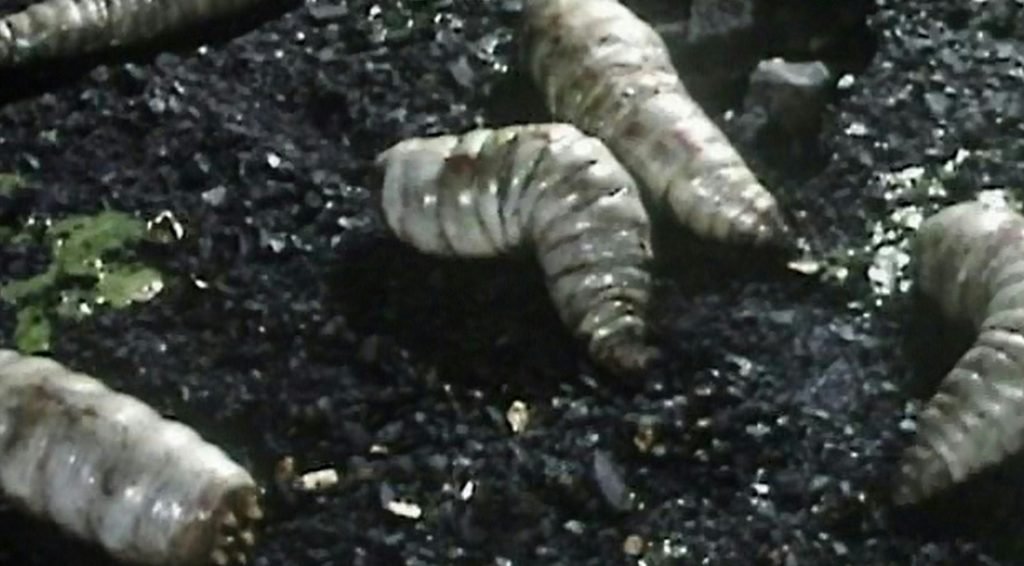
One of the annoying things on The Green Death was when we were lying under the set, operating the maggots: every time the actors walked, a cloud of dust would fall on us from above. When we emerged, we looked like real coal miners, much to the amusement of everyone else.
I only worked on a couple of episodes of The Monster of Peladon but Aggedor was produced by the costume department. We had nothing to do with it, although it was partly mechanical. They have specialist contractors who build costumes of this nature. The same applied to Alpha Centauri, which consisted mainly of a fibreglass headpiece. The arms were strung together with very thin nylon so that you couldn’t actually see them being operated. The Ice Warriors, once again, were made by the costume department. We had little to do with them.
Generally speaking, the only occasion we have anything to do with the monster costumes, or anything of that nature, is when they have to explode, or disintegrate, or collapse, or when they have some really specialist function. We’re often called upon to carve or sculpt the heads, which are eventually cast. When a monster is completely mechanical, and isn’t operated from within by an actor, such as Kroll, it’s all up to us.
When we do get to design a monster, an awful lot of thought is given to the comfort of the actor inside. As you can imagine, humping around in a rubber suit under the hot studio lights can be very difficult and unpleasant. In the case of the Nucleus in The Invisible Enemy, the actor had to continually stop and have a rest because the fumes from the fibreglass, from which it was constructed, were slightly overwhelming.
Arcturus was built completely by us. He was operated in much the same way as a Dalek. There were lots of buttons and switches and lights for the actor to operate. If I remember correctly, we had airlines going into the glass containers on each corner, causing bubbles to form in the liquid.
Genesis of the Daleks: in those days I was only an assistant, so I didn’t actually design Davros, only help in his construction. This was one of the instances where our department was completely responsible for the costume, because of its specialised nature. The head was sculpted in our sculpture department and the idea of making his wheelchair half a Dalek was to relate him to the actual Daleks, which, of course, he was supposed to have created.
One very amusing thing about Davros. Michael Wisher rehearsed his part sitting in half of a real Dalek, and to get into the feel of the part, he insisted on wearing a brown paper bag over his head, with a couple of eye holes!
The Daleks are now maintained by our Enterprises department [presumably BBC Enterprises, the forerunner of BBC Worldwide]. They spend most of their lives making guest appearances at fetes and other functions. Enterprises are now, I believe, responsible for looking after them and keeping them painted. I think there must be half a dozen complete Daleks but for Destiny of the Daleks, a number were made from plastic, specifically to be blown up.
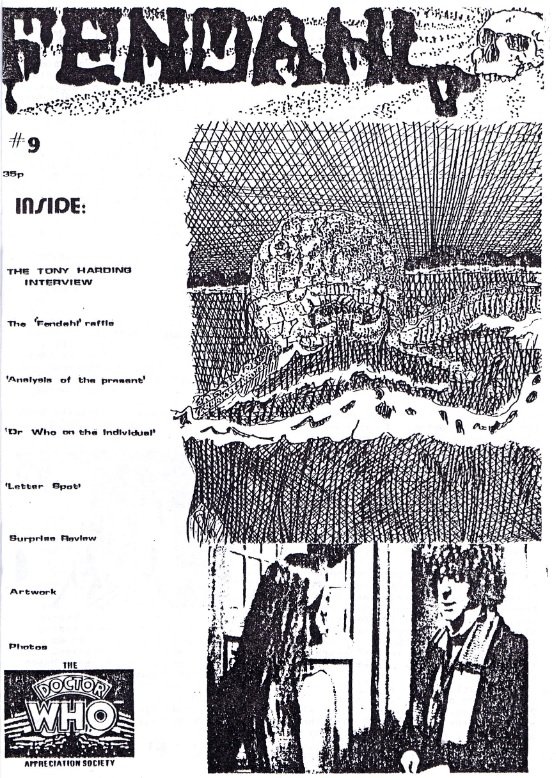
Normally, we only repair the Daleks if they become damaged in the actual programme.
The [Genesis of the Daleks] Dalek creatures were, once again, made of latex, which was poured over various forms of bladder, balloons generally! These were connected to airlines and then submerged into tanks of liquid. By switching the air on and off, we could create movement. They were dressed to look rather nasty with polystyrene tubes to represent veins, and some of them were filled with Polycell slime.
The Kaled dome, I think, was not the same one that Ravon showed the Doctor on the map [in episode one]. It was a wire frame, supported through the bottom of the set with rods. As we detonated the explosives, the rods were pulled down, and the whole thing collapsed.
What do I think of the Daleks? Well, they’re all right, once you get to know them! But seriously, I think they’ve served their purpose, and it’s time for them to go.
Regarding deviations from the original script: just about every Doctor Who I’ve worked on has altered immediately, as we start to record it. This is largely due to the impossibility of achieving what the script writers require.
Revenge of the Cybermen: as usual, our department had little to do with the design of the Cybermen, although we did adapt the helmet to fire the small charges. They were operated by the actors within the costumes, electronically. They consisted of a small amount of flash wool, fired by an electrical fuse. The actor was protected, as the container for the charge was carefully isolated by a metal plate. The Cybermats were loosely based on the ones from Invasion, with certain modifications. They were mostly controlled on nylon wires, but one or two were radio controlled.
I honestly can’t remember why stock film of a rocket was used [for the launch of the Skystriker]: probably because we were running out of time or money to do it as a model.
The size of spaceship models varies enormously. It all depends on just what you are trying to achieve. A small ship in the distance is obviously a small model. A larger section of the ship is a much bigger model! A typical example is the Liberator from Blake’s 7, which is about three feet from tip to tip.
Another thing that varies is the amount of detail you apply to the surface. For a close shot, the detail is very fine. Plastic dressing from model kits is often used. In the case of the Cybership, it was supposed to be quite an ancient looking vessel, and, at the end, it was required to explode. So we made one which was almost entirely polystyrene, which exploded, and one other was used for the docking sequences.
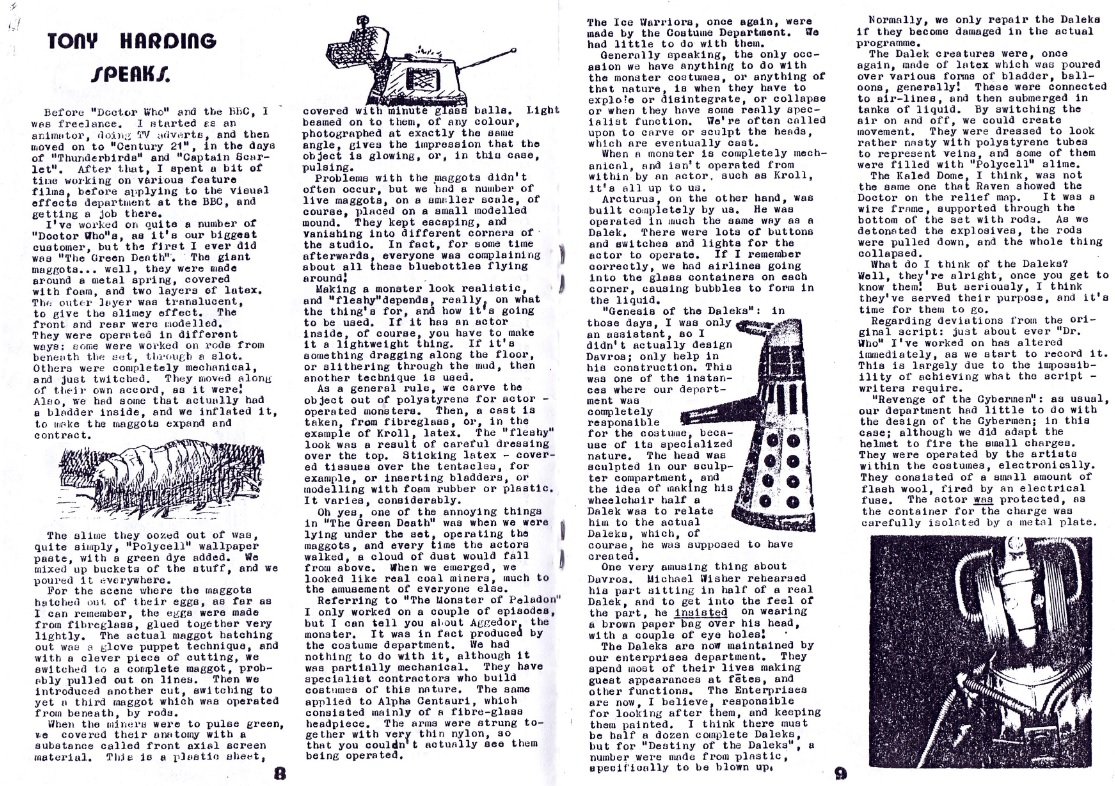
I understand from my colleagues in the Costume Department that the Cybermen costumes were made from scratch. The Invasion Cybermen had deteriorated so much that they were beyond repair. No doubt that’s now the state of the ones we used for Revenge…
As far as credits are concerned, it’s up to the producer and director who deserves a credit and who doesn’t, which is why the [actors playing the] Cybermen were not credited. Also, a monster may be operated by the Visual Effects Department, so we are not entitled to a credit, either.
One or two things went badly wrong and indeed could have been quite tragic. We filmed Voga in Wookey Hole [a cave system in Somerset, England] in a cavern known as the Witches’ Grotto, which was supposed to be haunted. The first incident concerned Lis Sladen, who was playing Sarah. She was supposed to be travelling along on a powered water ski, along a subterranean river, and she actually fell off. It was fortunate that the stunt man who was on hand was a life saver and was able to catch hold of her before she was swept into an underground cavern.
The second incident concerned an electrician in the same cavern. He was fixing some lights high up; the ladder he was standing on gave way, and he tumbled down a flight of rock steps and broke his leg.
Finally, a very standard pyrotechnic effect which was used over and over again, with 100 percent success, refused to go off. We decided that there could be something pretty odd about Wookey Hole. Quite frankly, we were delighted to leave that particular location.
Moving on now to The Invisible Enemy. I must admit I was not actually involved in any of the spaceship effects — they were all handled by Ian Scoones. I took over around the time K9 made his appearance and, as you probably know, I was responsible for K9’s design.
The set of the interior of the brain was a combined effort between ourselves and the set design department. However, we were responsible for such things as the phagocytes and their operation. The costume designer, Raymond Hughes, designed the Nucleus, and it was operated from inside by John Scott Martin.
As for the grievances about K9… Well, details like getting him in and out of the TARDIS were of secondary importance as we built him in three weeks flat! We knew we could do a cut there [as K9 entered the TARDIS] and at no time were we required to redesign him. Since the original K9 was built, there have been numerous modifications. One of the latest is that he can travel over rough ground, and a colleague of mine is currently building a K9 for that purpose.
The oscilloscope was specifically asked for in his first story. We did it with a CSO [colour separation overlay, i.e., blue screen] blue panel. If anyone needs it again, we have the facilities to repeat it!
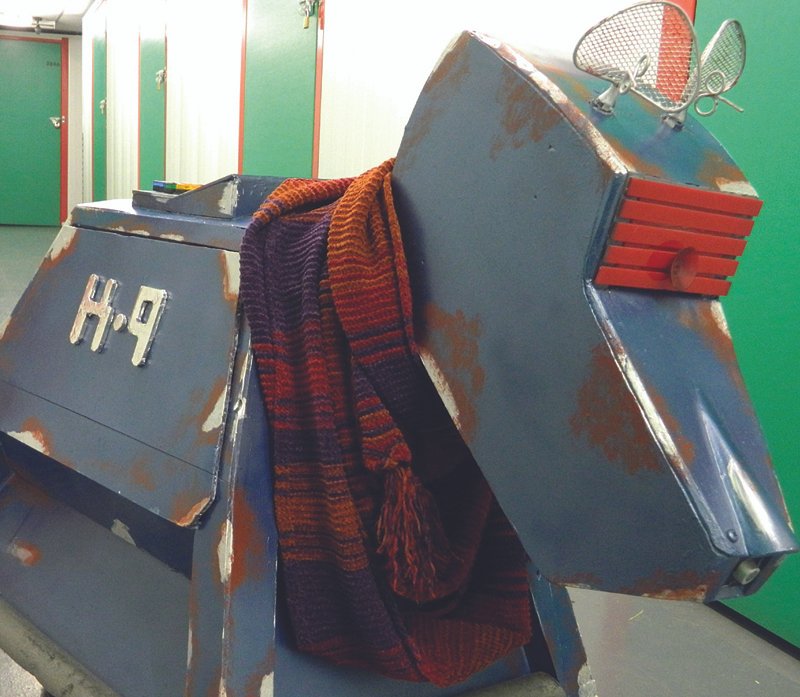
As you know, K9 was affected by the stray signals sent out by the [electronic studio] cameras and wouldn’t do what was required of him. It’s near perfect now, but back then…! There was one scene in which K9 was required to travel down a passageway, instead of which he reversed, poked out his antennae, and fired his gun! That sort of thing happened quite often in the early days. His receiving aerial has now been screened almost totally from stray signals.
The Power of Kroll was the last Doctor Who story that I ever worked on. Kroll was, once again, basically fibreglass and latex. Inside him was a series of rods, levers, and cables, and he was operated from behind by three or four different people. All the levers operated different functions. The palps on the front were attached to an airline, to make them expand and contract. Water was pumped through the mouth parts to give the drooling, slavering effect. The technique used for filming him was split screen. We filmed the live action with the Swampies running about in the foreground and then filmed the monster at our model stage. Unfortunately, the dividing line between the two pictures was too hard and gave the game away. We could have hidden the line with a different technique but it was out of our control.
Kroll was about 12 feet from tentacle tip to tentacle tip. The central dome was about two foot six inches in diameter. The Refinery was a four foot model but due to poor tank facilities, it was filmed at the wrong angle. We did not get the best value from that particular model. I must confess that I was very disappointed about that whole sequence.
We employed several methods for operating the full sized tentacles [used in the studio and on location]. Frequently, a shot would be reversed, just pulling them away from the actors, which gave the impression that the tentacles were swinging out and wrapping round them. Mainly, Kroll’s tentacles were operated on lines and rods, and swung and humped around by us. They were about fifteen to twenty feet long and consisted of a coiled wire in a foam and latex outer skin. As you can imagine, after dragging them around in the swamps, they became awfully heavy and difficult to control.
We were working in a tidal marsh alongside the Maltings in Suffolk. You can imagine the problems this presented. At the beginning of a sequence, we would be on dry land, and at the end, up to our necks in water. Because of this, there were great problems with continuity and it just so happened that we chose the few days of the year when the whole area was affected by the spring tides, and the tide came up twenty or thirty feet further than it normally would have done.
We did have some luck. For a week, we had nothing but brilliant sunshine, and we then had to film a sequence in a storm. The skies opened and it poured. Our rain simulation equipment was hardly needed.
What sort of budget are we allocated? Well, this varies from story to story. The average is about £1000 [apparently £7340.19 in today’s terms] in terms of materials, and it’s up to each individual effects man to calculate the man hours. When you stop and consider that this is for four or six half-hour episodes, the same as a feature film, the budget is very light. Our main problem is to achieve good effects using as little money as possible.
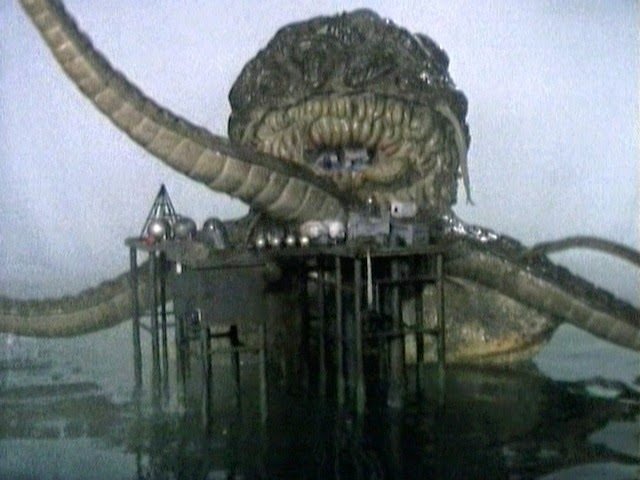
It is, of course, the right of the producer and director to examine and reject our designs. They don’t often exercise this right, except when cost rears its ugly head. They usually accept that we have arrived at our decision after much care and thought.
Computer consoles are usually hired from various contractors. However, if a particular panel has to perform a specific function, then we’re involved, and get fed up wiring up flashing lights!
The new design for the TARDIS set, which first appeared in The Invisible Enemy, was in fact a copy of the old one. It was made from different materials: mainly fibreglass. We weren’t, as a department, responsible for the design, but we did redo and rebuild the TARDIS console.
I sometimes have a shrewd suspicion that script writers have no idea what they want. Usually references are extremely vague and the end design is sprung by a conference between ourselves, the producer, the director, and, occasionally, the script writer too.
The rays for space guns are usually provided by the inlay operator, sometimes called the electronic effects operator. We do discuss the effect required and desired, and in certain cases we put a small charge on the end of the gun as a form of emission for the ray. Quite often, there is another charge for where the ray strikes an actor or a wall.
For falling masonry, several different techniques are employed. For small objects, debris and dust, we use large boxes called dropping boxes which are electrically operated to hinge open at the bottom, dropping huge amounts of dust etc.. For larger things like walls and archways, we suspend them from electrical devices called bomb releases, and then we drop small and large objects simultaneously. Also, we use small charges to blow things over create dust and smoke.
Filming model spaceships has so many different techniques that I’d need at least ten pages to explain them all, coupled with model filming. We do often use wires and double exposure so that in the first exposure we can hide all the mechanics supporting the model, and in the second we reveal the sky or the planet or whatever behind it. Different types of shots, as I say. Sometimes we track the camera towards a static spaceship, masking off all the surrounding features; sometimes we “fly” a model towards a camera, or around or above it. If we include an explosion, then we have to carefully hide all the wires that lead up to the charge.
Generally speaking, the ships are made from fibreglass or in some instances balsa wood, or maybe plastic drainpipes… you name it, we use it! We do have problems from time to time with motors burning but we have methods of isolating the flame source and thus protecting our models.
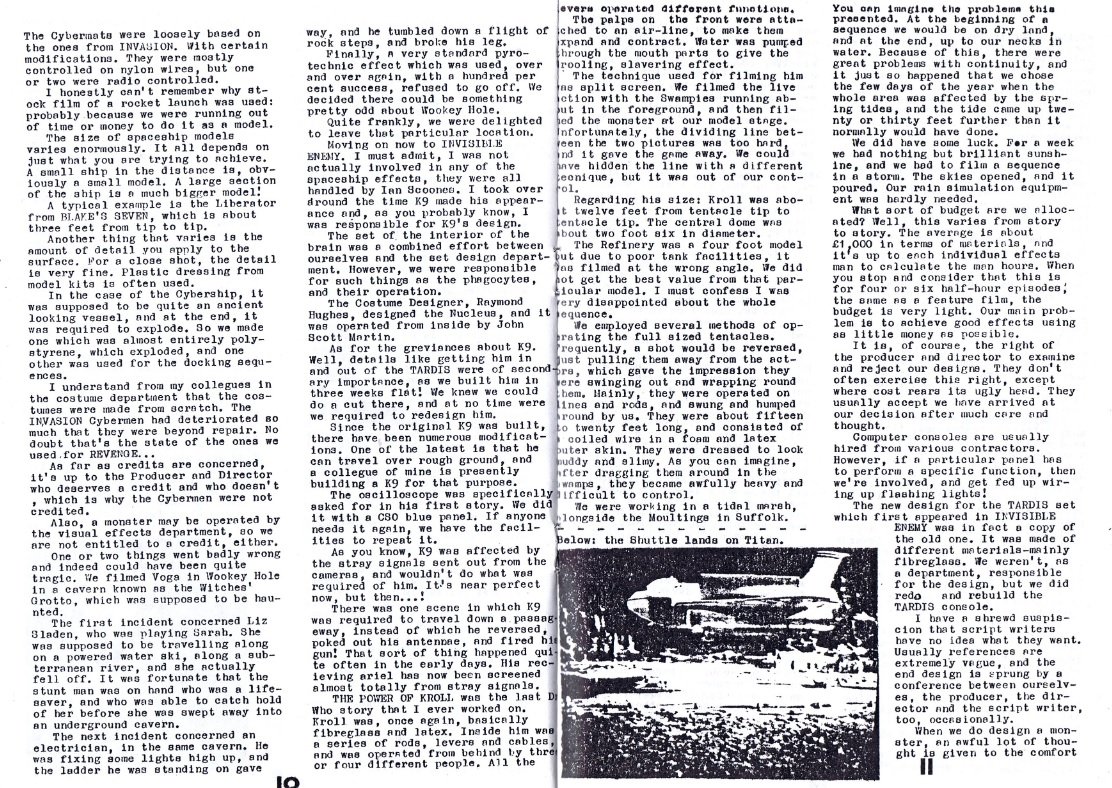
Up until recently, I had my doubts about the use of CSO but I was involved in an SF/comedy show called Come Back, Mrs Noah [does anyone remember this? It starred Molly Sugden and Ian Lavender and, as I remember, reused the Ark model from The Ark in Space as a space station – Frank] and CSO was very useful in achieving quite complicated model shots. The opening sequence showed the spaceship circling round. By using CSO, it saved an awful lot of time that would have been spent had we done it on film. The thing about CSO is that you can see the end result immediately: you don’t have to wait for the following day’s rushes. If the thing wasn’t successful, you can go back and do it again.
Up until I joined the Visual Effects Department, I was an ardent fan of Doctor Who, and I still watch it… I must confess I am a little disappointed about the effects. So many sequences could have been so much better, had there been more time and money available. Doctor Who is often compared, special effects-wise, to things like Star Trek, but American series do have higher budgets and probably much more time to shoot them. I was surprised that Doctor Who has caught on in the USA, in fact, as it is nowhere near as glossy and slick as their SF.
Despite all this, there is an element in Doctor Who that all the other SF operas seem to lack. There’s a humour and spontaneity which is, I’m sure, the reason it’s continued for so long. Against things in a more serious vein, like Blake’s 7, I think Doctor Who will outlast them all and maybe go on forever!
I wouldn’t really like to comment on the quality of the scripts! Actually, I have tried writing a script myself, and it’s very difficult to avoid all the usual cliches. So, although one can criticise, it takes a very keen mind to write an interesting and successful Doctor Who story.
News for fans of The Hitchhiker’s Guide to the Galaxy: yes, the TV version will include live actors. In fact, a colleague or mine, Jimmy Francis, will be doing the series (he’s just finished working on Blake’s 7). He’s already started reading the scripts and planning and comparing designs.
At the moment, I’m working on several different programmes. An amusing drama called The History Man for BBC Birmingham, another programme about a charter company called Buccaneer, and I’m moving on to – wait for it – Doctor Who! But they haven’t bothered to tell me anything yet, and all I can tell you about the new season [Tom Baker’s final season – Frank] is that only two scripts are in so far.
Best wishes to you all,
TONY HARDING
March 1980
